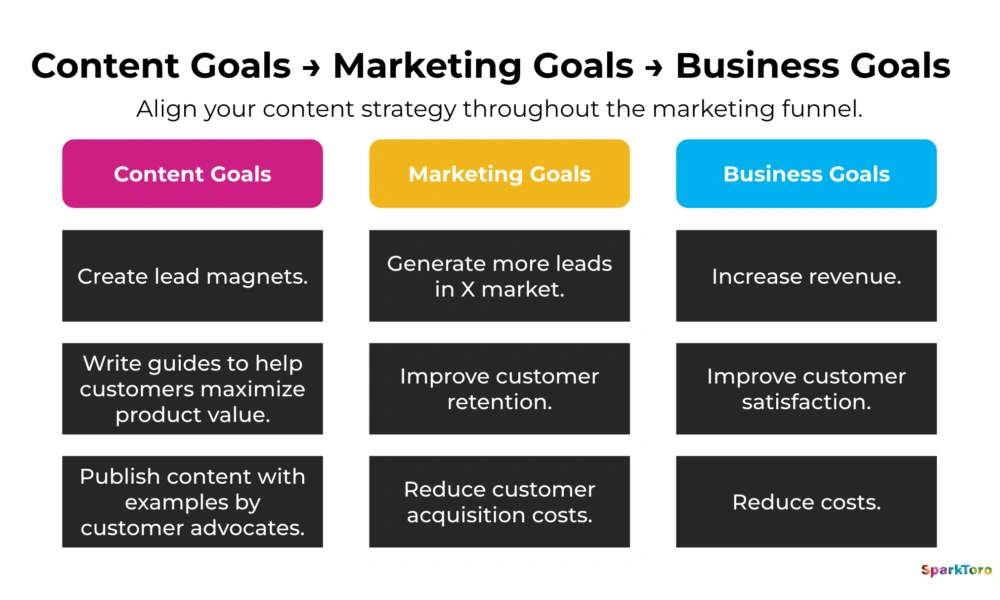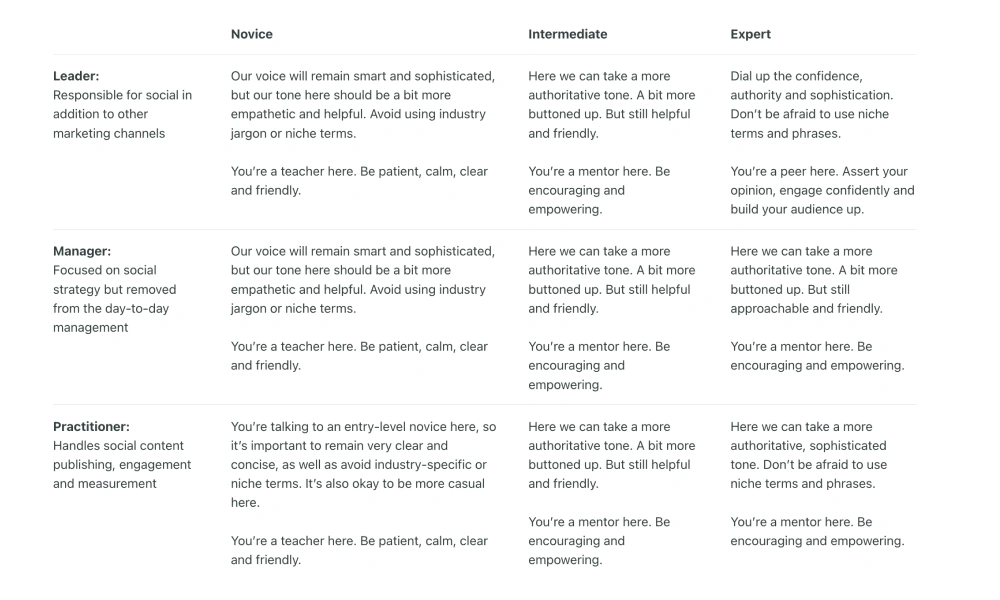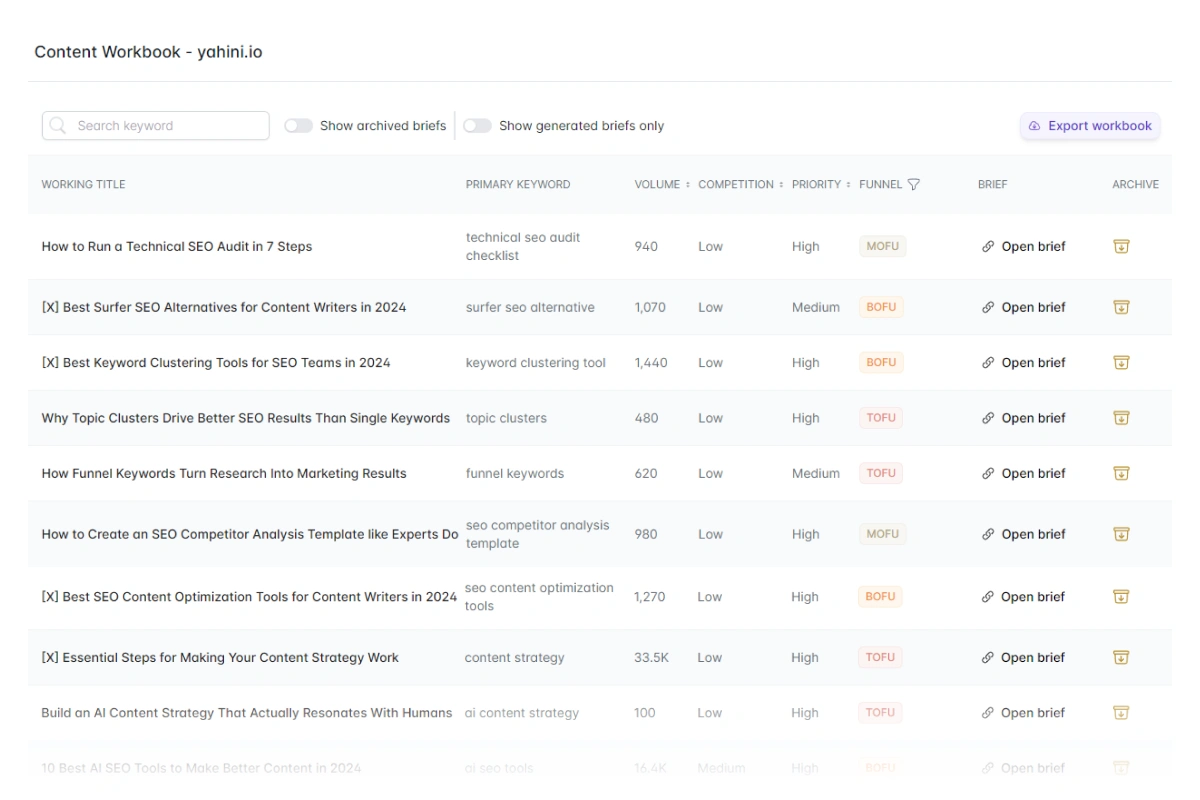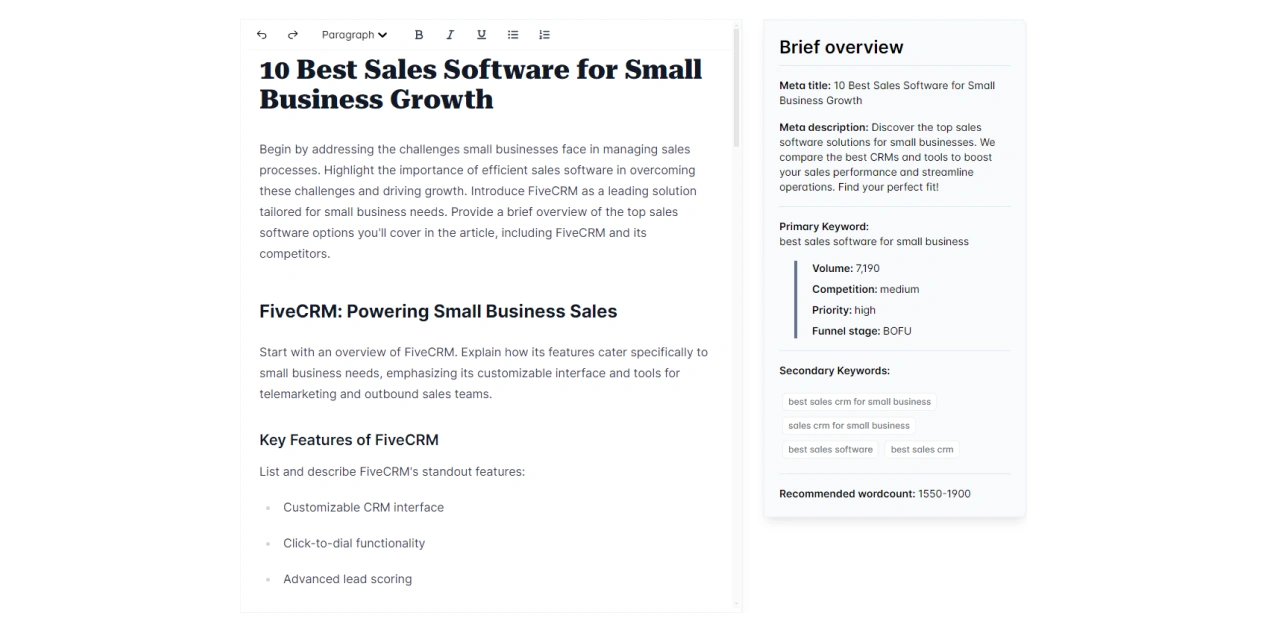
Common Content Briefing Mistakes and How to Avoid Them

Content Strategist
Let’s imagine this scenario.
Sarah pours her heart into creating blog posts for a startup.
She's working overtime, her team is stretched thin, and the budget's maxed out.
Yet, month after month, the content falls flat. Engagement is low, conversions are a trickle, and the ROI is nowhere to be seen. Sarah's left scratching her head, wondering where it all went wrong.
What’s to blame here? Poorly crafted content briefs.
This often-overlooked step in the content creation process is the silent saboteur of marketing efforts everywhere. It leads to misaligned content, wasted resources, and missed opportunities to connect with your audience.
But we have some good news, too: mastering content briefing isn't rocket science. With a few smart tweaks to your approach, you can transform your content briefs and start seeing those results.
Table of Contents
The problem
You probably remember the good old times when content marketing was all about churning out blog posts and hoping for the best.
Now, everything’s more complex, and I don’t speak only about SEO but also about how easy it is now to publish a blog post and call it a day.
To make a blog post count for something, you need a strategy, and the backbone of that strategy is a content brief.
Get it right, and you're setting yourself up for content that resonates and converts. Get it wrong, and you're in for a world of frustration.
How poor briefing affects the reader directly
You spend hours crafting blog posts, and you hit publish, sit back, and… crickets.
No engagement, no shares, no leads.
What went wrong?
Chances are, it all started with a vague or misguided brief.
When writers lack a clear roadmap, they are left guessing about the content's purpose, audience, and goals.
Poor briefing sets off a domino effect of inefficiency. Writers end up playing a frustrating game of back-and-forth with endless revisions. Each round eats up time and resources that could be better spent on creating new, impactful content.
This cycle of miscommunication and revision drains resources and morale. Writers become frustrated when they're not given clear direction, and marketing teams get discouraged when their content consistently underperforms. This tension can lead to a breakdown in collaboration and creativity—the very things that fuel great content.
And, while you’re busy putting out fires and reworking content, your competitors take the lead and steal your audience. Every piece of misaligned content is a missed opportunity to engage, inform, and convert.

Here’s the scale of the problem
Let's quantify this problem. According to the Content Marketing Institute, businesses spend an average of 26% of their total marketing budget on content marketing. That's a significant chunk of change. Yet, the same research shows that only about 42% of B2B marketers say they're successful at content marketing.
In other words, more than half of all content marketing efforts are falling short of their goals.
What does this mean in dollars and cents?
For a mid-sized company spending $500,000 annually on content marketing, that could translate to over $250,000 wasted on ineffective content.
And that's just the direct cost.
Factor in the lost opportunities for lead generation, customer acquisition, and brand building, and the true cost of poorly executed content strategies skyrockets.
It's a sobering reality check for businesses of all sizes – get your content briefing right, or prepare to watch your marketing budget go up in smoke.
Common content briefing mistakes and steps to avoid them
Now that we've seen the impact of poor content briefing, let's roll up our sleeves and tackle the most common pitfalls.
I'll walk you through the mistakes I've seen time and time again and, more importantly, show you how to sidestep them.
Vague or Absent Objectives and KPIs
You wouldn't set out on a road trip without a destination in mind, right?
Yet, that's exactly what happens when content briefs lack clear objectives.
I've seen countless briefs that simply state, "Write a blog post about X topic," without any mention of what that post should achieve. This leaves writers in the dark, guessing at the content's purpose.
Solution
The fix is straightforward: spell out exactly what you want the content to achieve.
Are you looking to boost brand awareness, generate leads, or establish thought leadership? Get specific.

For example, instead of "write a blog post about customer service trends," try "create a guide on emerging customer service technologies to position our brand as an industry leader and generate qualified leads for our software solution."
How it works
Take it a step further by including target metrics in your brief.
If you're aiming for engagement, specify the target number of shares, comments, or time spent on page.
For lead generation, set a goal for form submissions or email sign-ups.
These concrete numbers give your content creators a clear benchmark to aim for and help shape the content's structure and call-to-action.
Why it’s effective
Your writers will understand the 'why' behind the content, allowing them to craft pieces that resonate with your audience and drive meaningful results. This alignment ensures that every piece of content you produce is a strategic asset, working hard to move your business forward.
Superficial audience understanding
A lot of briefs describe the target audience as “women, 25-45, interested in fitness”.
This surface-level understanding leads to generic content that fails to connect with readers on a deeper level. It's the difference between shouting into a crowded room and having a meaningful conversation with someone who gets you.
Solution
Ditch the broad strokes and get specific.
Create detailed personas that bring your audience to life.
A good example would be: "Laura, 32, busy mom of two, feels guilty about not having time for self-care. She's looking for quick, effective workouts she can do at home without expensive equipment."
How it works
You need to start getting to know your audience.
Use surveys, social media listening, and customer interviews to uncover their true motivations and behaviors. Include insights like preferred content formats, favorite social media platforms, and trusted information sources in your brief.
Why it’s effective
When you truly understand your audience, you can speak their language and address their specific needs.
This will be the difference between a reader thinking, "That's interesting," and "This feels like it was written just for me." This deep connection builds trust, encourages engagement, and ultimately drives action—whether that's sharing your content, signing up for a newsletter, or making a purchase.
Lack of content structure and outline
Ever tried to assemble furniture without instructions? That's what it's like for writers working from a brief without a clear structure.
Too many people expect writers to magically produce well-organized pieces by simply saying, “Write about the benefits of our product.”
This approach is a recipe for disjointed content that meanders and fails to deliver a clear message.
Solution
Instead of leaving writers to fumble in the dark, light the way with a clear structure. Break down the content into main sections and provide suggested subheadings.
For example, if you're creating a guide on sustainable living, your brief might include sections like "Understanding Your Carbon Footprint," "Easy Home Energy Savings," and "Sustainable Shopping Habits." This framework gives writers a roadmap to follow.
How it works
Go beyond just listing topics.
Sketch out the flow of the content.
Start with an attention-grabbing intro, then list the main sections in a logical order. Under each section, bullet point key ideas or facts to cover. Don't forget to include notes on the desired conclusion and call-to-action.
Why it’s effective
This approach saves time on revisions, as writers are less likely to miss important elements or veer off-topic.
Overlooking brand voice and style guidelines
Your brand voice is your company's personality. It's what makes you unique and recognizable.

But too often, briefs completely ignore this crucial element. One brief section might be formal and academic, while another is casual and peppered with slang. This inconsistency confuses your audience and dilutes your brand identity.
Solution
Don't leave your brand voice up to chance. Your brief should paint a clear picture of how your brand speaks.
Are you the friendly expert? The innovative disruptor? The trusted authority? Spell it out.
Give writers a sense of your brand's personality and how it should come across in the content. This guidance ensures that whether someone's reading a blog post, watching a video, or scrolling through your social media, they always recognize your unique voice.
How it works
Have you ever heard of “Show, don't just tell’”?
Include snippets of content that nail your brand voice. Highlight specific words or phrases that resonate with your brand, and point out ones to avoid. If you use humor, give examples of the type of jokes that work for your brand.
Why it’s effective
A consistent brand voice builds trust and recognition. When your audience encounters your content, they should immediately know it's you – even without seeing your logo. This familiarity breeds comfort and loyalty.
Overreliance on automated tools
In the rush to churn out as much content as possible, content creators have fallen into a trap.
They're leaning too heavily on AI-powered tools and templates, churning out briefs that are bland, unoriginal, and plain boring. These generic briefs lack the strategic insight and creative spark that make content truly shine.
Solution
The key is finding the sweet spot between efficiency and creativity.
This is exactly where Yahini can help you; it’s a content strategy powerhouse that blends AI with human expertise. It dives deep into your business, your audience, and your goals to craft briefs that are both data-driven and creatively inspired.

What sets Yahini apart is its ability to understand the nuances of content strategy. It considers the entire marketing funnel, from top to bottom. This means you get briefs tailored to each stage of your customer's journey, ensuring your content hits the right notes at the right time.
How it works
Start by using AI tools and templates as a springboard, not the finish line. They're great for gathering initial data and ideas, but that's just the beginning.
This is where Yahini differs from other content briefing tools—it takes information about your business and runs it through its strategist-trained AI models to create the perfect content briefs for your content goals.

Why it’s effective
When you stop over-relying on tools, you’ll find that you can easily combine AI's efficiency and data-crunching power with the strategic thinking and creativity that only humans can provide (or you can use Yahini to do this).
Using Yahini to create strategist-level content briefs
As we wrap up, it's clear that effective content briefing is the cornerstone of a successful content strategy.
You need to avoid these common pitfalls if you want your content to align to your overall marketing goals.
Yahini offers you the strategic advice you need to create a content strategy from the ground up. Its AI has been trained by seasoned content strategists, providing you with expert-level content briefs right at your fingertips.
Ditch the generic outlines! Sign up now.
-
Need a 24/7 content strategist? See how Yahini can help you craft perfect content briefs.
-
Any questions? I’m happy to help! Just reach out to us!
-
Not ready yet? Learn more about Yahini here.